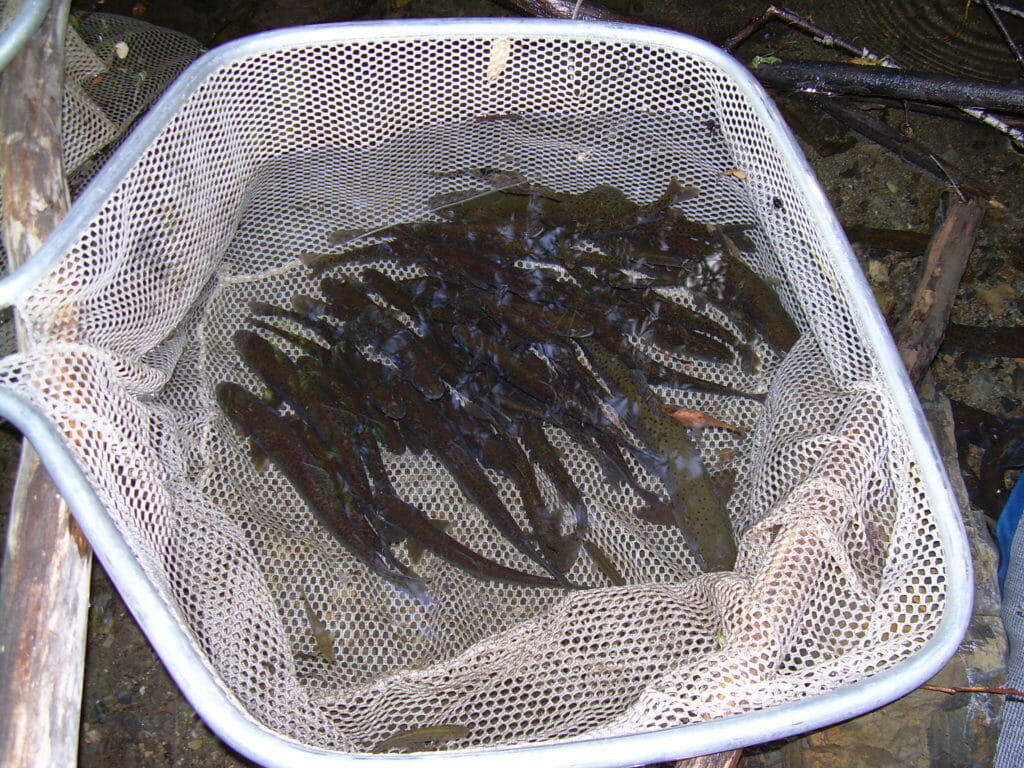
Hatchery fish can quickly become domesticated to the hatchery environment, and often originate from streams or rivers geographically distant from where they are planted. This means that their genetic makeup can be quite different from native populations, posing a significant threat when they interbreed with native trout and salmon. These genetic differences can, however, also provide an effective tool for determining the degree to which hatchery fish are intermixed with native populations, allowing us to evaluate this threat at landscape scales. Genetic information can also help us characterize the history of stocked populations of non-native fishes.
Resources
In the Boise River basin in Idaho, native redband trout are potentially compromised by historical stocking of both non-native cutthroat trout and hatchery coastal rainbow trout. We genotyped samples from rainbow trout hatcheries known to have been planted in Idaho and evaluated their influence on 41 populations of redband trout. We also assessed impacts of non-native cutthroat trout on these native redband trout populations. Hybridization with cutthroat trout was widespread but only a few affected populations were intensively compromised. Hybridization with coastal (hatchery) rainbow trout was considerably more pervasive (almost 40 percent of sampled locations), and several local populations of native redband trout – including the blue-ribbon fishery in the South Fork Boise River – have been almost completely replaced with hatchery coastal rainbow trout. However, the persistence of some redband trout populations with high genetic integrity provides some opportunity to conserve native genomes and highlights the complex decisions facing managers today.
Invasive species present a genetic paradox. Their populations are often established from very small groups of individuals and so should have very little genetic diversity compared to populations in their native range. So how do they thrive when they should be genetically compromised? In this study we sampled populations of nonnative brook trout in Idaho and compared them to samples from the four brook trout hatchery strains used in Idaho beginning in the late 1800s and early 1900s. We found many naturalized populations showed surprising levels of genetic diversity and signals of mixing among the hatchery strains. Our study suggested mixing of different hatchery lineages, either before transplanting or through movement among established populations in the field, may have allowed these fish to defy the “genetic paradox” early on in their establishment. This paper received the Stephen Phelps Memorial Award from the Genetics Section of American Fisheries Society.


